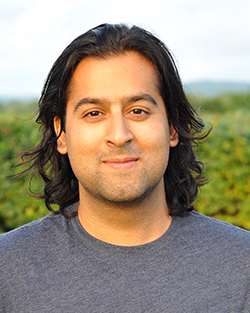Reflections of a 21st Century researcher: scientists must speak the language of policy to have a lasting impact

Sasha Madhavji
Towards the end of my masters degree in biology, I came across a disturbing statistic published by the Ontario Science Centre in 2017: 43 percent of Canadians believe scientific findings to be a matter of opinion. Here I am, a freshly minted grad, and the seemingly unshakeable body of knowledge upon which I based my research is seen by nearly half my country as “opinion”. Let’s not even delve into the fact that I studied climate change... I trudged through mountains of evidence, defended a thesis, I was vetted by other profs, yet when I step out of the ivory tower the only thing on my mind is this shrieking wake-up call of how easily I could take for granted the validity and importance of scientific research. If the word “elitist” is thrown around these days with increasing recklessness, I cannot think of a more appropriate target than traditional academia; a world where the pursuit of knowledge was restricted to an exclusive group. Images of white hair and tweed jackets spring to mind.
The context of scientific research has changed – it’s now the Information Age. Everyone deserves access to knowledge, especially because we invest our hard-earned tax dollars in it. Canadians face a suite of science-related issues: the oil sands, vaccines, the fentanyl epidemic, pesticides, the list goes on. Yet, policy makers tackling these issues occupy a completely different world than that of scientists. Policy involves consulting numerous groups who bring their own assets and interests to the table, while the scientists use technical expertise to navigate the molecular weeds. The top priority of the Canadian Science Policy Conference (CSPC) this past November was on improving communication between the vastly disconnected worlds of science and policy-making. Science can have profound and positive influence on government policy when the former is communicated in a concrete, issues-oriented manner, such as the phasing-out substances that deplete the ozone layer. The achievement of this aim is built upon trusting and strong relationships between scientists and policy makers. As it stands now, though, government representatives at CSPC consider academics as their least likely collaborators in matters of science-related policy. In large part, the reason for the great divide between the communities resides in the fact that faculty and policy experts tend to speak different languages and target divergent outcomes.
It then comes as little surprise that Canada’s spending on research and development, as a percentage of our GDP, no longer ranks in the top 30 nations globally. How could it when public and political perceptions of the scientific community align perfectly with the antiquated tradition of the ivory tower – where the pursuit of knowledge necessitates being out of touch with everyday life? The growth of Canada’s economy into the technologically-driven future depends on research and innovation. The perseverance of our seemingly endless natural resources – oil, water, wildlife – depends on careful stewardship. Eradicating disease, growing crops, generating energy – all of these require the successful integration of science and policy. Improving the day-to-day lives of all Canadians depends on deconstructing the ivory tower and bringing together the worlds of science and policy making.
This process of unifying the worlds begins with training professional scientists (i.e., grad students and post docs) to fulfill roles beyond traditional academia. It is imperative that our young graduate students can communicate with everyone, not only colleagues. Reliable scientific influence in policy can flourish when there exists a cultural understanding of the importance of research and how it improves lives. Collaborative degree programs are increasing in number – allowing students to place their research in larger contexts of society and the environment, and honing their skills to communicate with diverse audiences. Within academia, interdisciplinary study is the new paradigm. Opportunities for graduate researchers to interact with government and policy are also expanding; governments at all levels are acknowledging the need to harness the latent pool of scientific knowledge at their fingertips. Organizations like MITACS, that partner STEM students with government and industry, are building on their fledgling success and widening their scopes to address the new portfolio of skills required of the 21st Century professional. More practical graduate degrees within universities are also being developed with the goal creating a pipeline between science grads and industry jobs, fueling innovation.
These more recent developments are a major step forward in creating modern researchers who can wear various hats and speak multiple languages. Early and lasting relationships between policy makers and scientists will become the new norm and a culture of public trust in our scientific institutions will form. Scientific enquiry may not always yield black and white results but it allows for more informed policy making decisions which benefit all Canadians, whether it be in the form of a medical breakthrough or a strengthened and more competitive economy. We know “eureka!” happens at the lab bench, but it can just as easily happen in the corridors of parliament or indeed over a cup of coffee between a scientist and a politician.
Sasha Madhavji is a recent graduate with a masters in biology, currently working in communications and government relations for the Faculty of Science at Western University.

